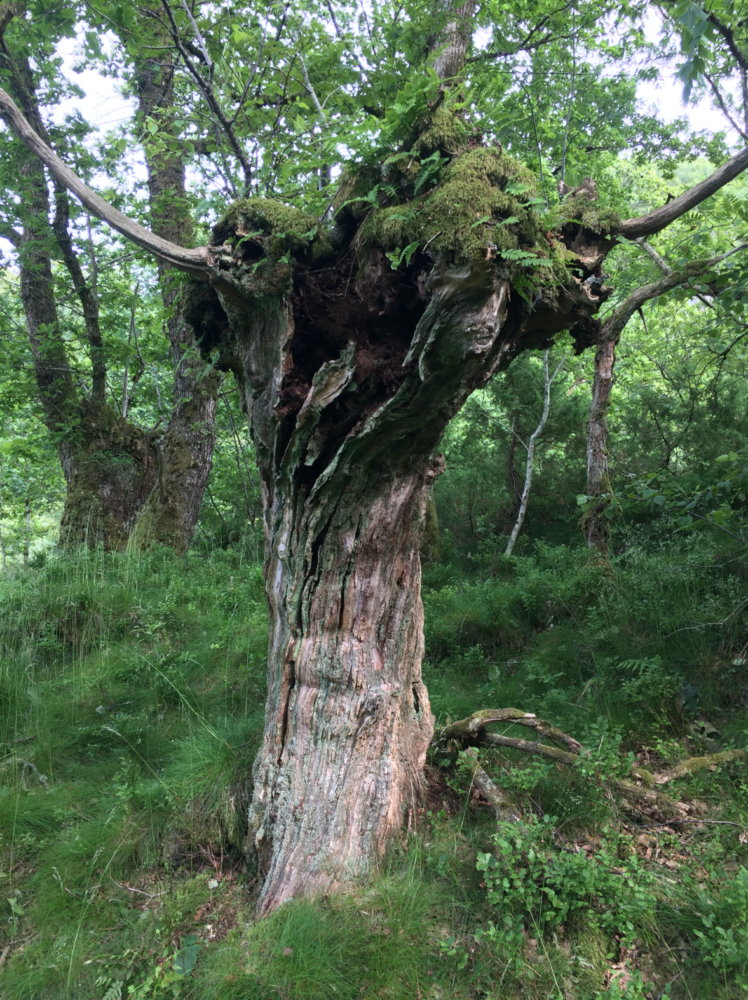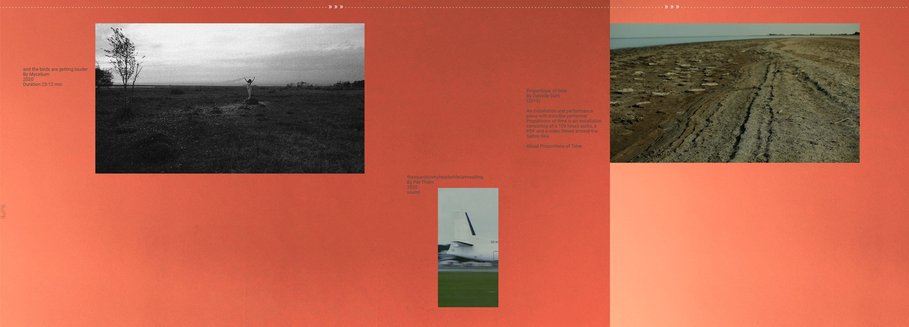Alexander Holm – The Understated Sci-Fi of “GiVa1G”

Alexander Holm “GiVa1G” (Sensorisk Verden, 2019) – Review by Macon Holt
Known for his work with Vid Edda, Group 4K, Young Bragi amongst others, the prolific Danish sound artist, Alexander Holm, released “GiVa1G” last year, the first album under his own name. “GiVa1G” is a high concept suite of pieces that draw much of their material from field recordings made on an expedition to study the dwindling oak tree population of the forests of southern Norway in collaboration with ecologist, Ross Wetherbee. The result of this process is a subtle and engrossing work that reveals much more about our present environmental conditions and our entanglement in their production than many other pieces of similarly themed sound art.
This record is an overtly ecological piece of sound art; a designation that tends to garner kudos in certain critical circles but should also spark should raise scepticism. As a critic, my interest tends to be piqued more by pieces that seem unable to resist ecological readings (e.g Billie Eilish’s “all the good girls go to hell”) than works that overtly state that they are to be understood as such. To me, the former illustrates the actually occurring breakdown of the illusory separation between nature and society; the imposition of which is what got us into this mess in the first place. Whereas, at times, the later can seem like we are just decorating our descent into this catastrophe for the amusement and absolution of a smug art crowd. A crowd who’s being on the same page as the scientific community with regards to climate change for years has done nothing to halt the coming horrors. The burden of proof for such overtly ecological work to tell us or make apprehensible something about the ecological conditions of our world is often too high. Why address this issue through sound art as opposed to science or more direct activism? What do these obscure recordings do that other acts cannot?
So suffice to say, I approached “GiVa1G” with some trepidation. On the surface, nothing about this project gave me a reason to set aside my prejudicial criticisms. From the wooden USB amulet engraved with the albums name, to the low fi field notes and diagrams found in the A4 PDF booklet, “GiVa1G” appeared to me to be a project that was, like most eco sound art, both worthy and irrelevant. This interpretation definitely affected my first listening to the record but repeated and more focused listens helped the most interesting ideas at play in “GiVa1G” to emerge.
“GiVa1G” is less a record about the dwindling oak tree population of forests of southern Norway, than it is about the experiences of the techno/natural assemblages – the ways the complexities of the world around us are converted into computable data – by which we come to know this. This is a record about the confusion and horror of the slow subtle and inexorable signs that have preceeded the ending of this world. We hear the processes of life continuing while, simultaneously, diminishing in ways that would not be apparent were it not for the focused framing provided by this album. The 49-minute run time is like a real-time microscope highlighting the persistence and degradation of life processes that would otherwise go unnoticed were it not for the specialist techniques and equipment that have been brought in to investigate them. On “GiVa1G”, we hear matter becoming meaning as we hear trees struggling to thrive in the world we have inflicted upon them.
What sets this album apart from similarly focused projects is the attention it pays to the process of measurement and abstraction that makes the situation facing the oak trees apparent to us in the first place and that make such sound recordings possible. We hear science fiction sounds, which evoke the means of carving up the world into data that can be computationally interpreted, placed in an uneasy parallel relationship with the soundscapes of those organic processes under examination. In the opening track, “y.vast”, we hear snippets of distorted incidental conversations from the field recordings fade into the pulsing flows of liquids that course through the root systems on the tracks that follow (“(*back) front” and “PX1”). Through this arrangement, we are able to hear ourselves as alien visitors. This is even brought out in the mix. The clear high pitched beeps, pulses and whines of the tools these visitors have brought to study this environment are always kept a world apart from the low-end noises of life-in-process. But despite this apparent separation, we know that frequency, like the natural and social worlds, is a continuous spectrum.

The record isn’t presenting this division to reify nature. This is not a rehash of a story of humanity’s fall from natural harmony as we find in the likes of Phillip Glass’ bombastic “Koyaanisqatsi”. Indeed, it is from the seemingly modest scope of a study of how the changing environment is affecting this corner of the world that we are provided with a new perspective on the artificial and ideological nature of the perceived separation between the social and natural worlds. Because if these worlds were truly disconnected, then the measurements of the “alien” equipment would not be able to offer the meaningful descriptions of the coming dissolution that they do. This album is a small sci-fi short story about a survey crew measuring the demise before the dark dystopian epic to come. The most haunting track on the album is the final piece, “grio numbers (*-*)”. A pulse of laboured breathing marks the passage of time between semi-regular scans. The breathing struggles harder and whimpers like a wounded animal before fading into the background of human observers going about their business of dispassionately recording a living thing in inexorable decline.
In Alex Garland’s film adaptation of the book “Annihilation”, trees and moss fuse with human bodies to produce an uncanny horror by resituating the human being as nothing more than the same kind of organic material it believes itself separate from due to its ability to consciously observe it. An odd thing happens while listening to Holm’s album. When you look at some of the photos of the mutated and aborted trees in the booklet, they look just like the beautiful horror nature of “Annihilation”. The only difference is that this time it is us who have mutilated the trees.
“GiVa1G” was released by Sensorisk Verden on June 28 2019.




